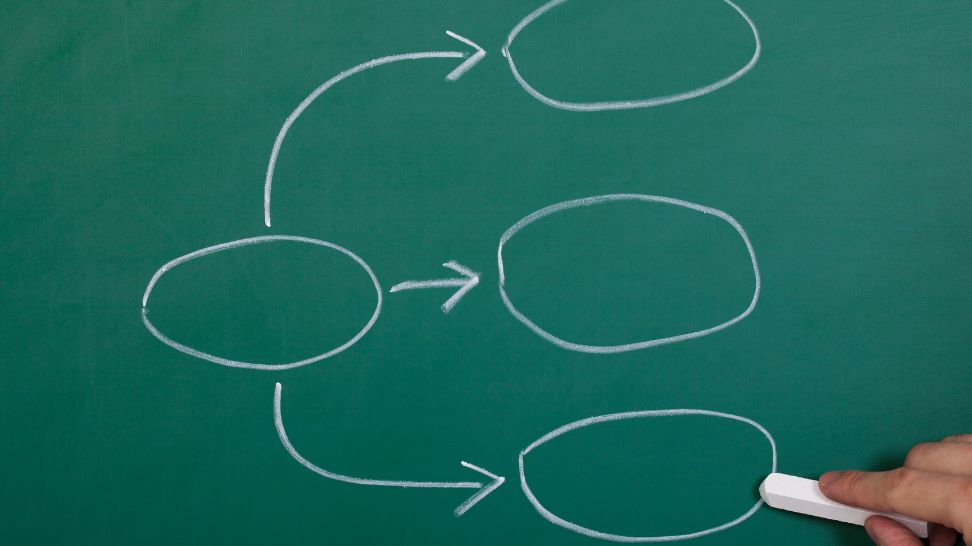The U.S. divorce rate has declined dramatically for most Americans over the last few decades. But a recent USA Today report revealed it has doubled for those over 55 since 1999. For this reason, married Americans should consider learning how to protect assets during a divorce by using a trust.
But why stop there? Married Americans should also take estate planning a step further by determining how to protect trust assets from a beneficiary’s divorce. It’ll protect their assets if one or more of their beneficiaries decide to divorce and allow families to steer clear of the types of legal battles that trusts are supposed to help them avoid.
If you haven’t set up a trust yet, make sure you do it in a way that’ll let you protect your assets from a beneficiary’s potential divorce from the start. It’ll ensure your family won’t have to part ways with assets in a divorce case caused by a lack of foresight.
Here is how to protect trust assets from a beneficiary’s divorce.
Types of Trusts and the Impact of Divorce
According to a 2024 survey, only around one-fourth of Americans have gone through the estate planning process. If you’re someone who hasn’t done estate planning yet, now is the perfect time to do it. It’ll protect your assets by ensuring they’re distributed to the proper heirs.
One effective way to pass down assets is by setting up offshore trusts. Revocable and irrevocable trusts are the two main types of trusts that can protect your assets.
Spendthrift Provisions
Whether you create a revocable or irrevocable trust, your trust should include spendthrift provisions to further protect trust assets from a beneficiary’s divorce. A good spendthrift clause can provide you with further peace of mind.
Definition and Purpose
A spendthrift provision is a clause created to stop beneficiaries and/or creditors from gaining access to the assets in a trust. It’s a mechanism you can put in place to prevent a beneficiary from mismanaging assets. You can also utilize it to prevent a beneficiary’s share of your assets from being given to someone else.
Limitations of Spendthrift Provisions
While spendthrift provisions can effectively protect trust assets, they have limitations. For example, these provisions won’t always protect assets in a trust from tax levies or child support orders. Spendthrift provisions are also not recognized under state law in every state.
Trust Design Strategies for Asset Protection
Setting up an irrevocable trust and including the right spendthrift provisions are the keys to coming up with a solution for how to protect trust assets from a beneficiary’s divorce. However, there are other steps you can take to protect assets in a trust from falling into the wrong hands. Researching, implementing, and implementing the proper trust design strategies can make asset protection easier overall.
Discretionary Distributions: Trustee Controls Timing and Amount
Once you set up a trust, regardless of whether it’s revocable or irrevocable, you technically won’t maintain control over its assets anymore. Instead, a trustee will assume control and take charge when distributing them to beneficiaries.
An easy method for those who want to protect trust assets from a beneficiary’s divorce is to talk to their trustee and let them know:
- When they would like them to distribute assets
- How many assets they want distributed at once
By controlling the distribution of your assets, you can provide them with more protection. You’ll empower your trustee to make the right calls and keep your assets away from a beneficiary’s soon-to-be ex-spouse.
Indirect Distribution Techniques
Another reliable method for those figuring out how to protect trust assets from a beneficiary’s divorce is to use indirect distribution techniques. When you take this approach, you’ll have your trustee make payments on a beneficiary’s behalf rather than directly distributing assets.
Payments on a Beneficiary’s Behalf
If you want to ensure the assets you leave behind for loved ones are used for specific purposes, you can have your trustee make payments for certain items on a set schedule. For instance, you can have them pay a young beneficiary’s college tuition or take care of the medical bills associated with an older beneficiary’s medical procedures. You can even arrange for a trustee to make mortgage payments for a beneficiary instead of providing them with cash or real estate.
Beneficiary Behavior and Trust Protection
You aren’t the only one who should worry about protecting the assets in your trust from a beneficiary’s divorce. A beneficiary can also help ensure an inheritance has more than enough protection.
Pre-Nuptial Agreements and Disclosure of Trust Assets
Pre-nuptial agreements are still relatively rare among married couples in the U.S. Only about 15% of married couples sign them as of 2024. While it might seem low, this statistic is up from just 3% in 2010, which shows the willingness of many people to sign pre-nuptial agreements to avoid legal issues with trusts and other estate planning tools.
Your beneficiary must disclose the assets in your trust when signing a pre-nuptial agreement with a significant other, which might cause concerns. But don’t let them stop you from going through this process anyway.
Trust Administration and Ongoing Monitoring
As long as you choose the right trustee, you might not think you need to spend much time worrying about protecting your assets. However, you should still monitor your trust and stay in constant communication with your trustee.
Trustee’s Role in Protecting Assets During Divorce
From the beginning, the trustee you assign to your trust should do their part to protect its assets. They should know where you would like to distribute these assets and when you would like distributions to occur. They should also know the dynamics of your family and understand how to protect your assets in the event of a divorce involving a beneficiary.
Alternative Asset Protection Strategies
Setting up a trust is a great option for those learning how to protect trust assets from a beneficiary’s divorce. However, it’s just one of the many ways you can provide asset protection to the items you put into a trust. Consider a couple of alternative asset protection strategies as well, outlined below.
Life Insurance Policies
If you’re worried about one of your beneficiaries going through a divorce in the future and you want to protect their share of the assets in your trust, why not use a life insurance policy to keep it safe? You can name them as a beneficiary in your life insurance policy, and they’ll automatically receive financial benefits from it at the time of your death.
Separate Property Ownership
Leaving property behind for a beneficiary is another decent way to protect assets in a trust. Move this property to an LLC so it isn’t in your name, and allow a beneficiary to secure it later while protecting it from any divorce proceedings they might go through.
Call Us To Discover How To Protect Trust Assets From a Beneficiary’s Divorce
Now that you know how to protect trust assets from a beneficiary’s divorce, are you ready to start setting up a trust so you can fill it with your prized possessions? If so, Blake Harris Law can extend a helping hand. Contact us to hear about the asset protection strategies you might consider employing to suit your family circumstances.





